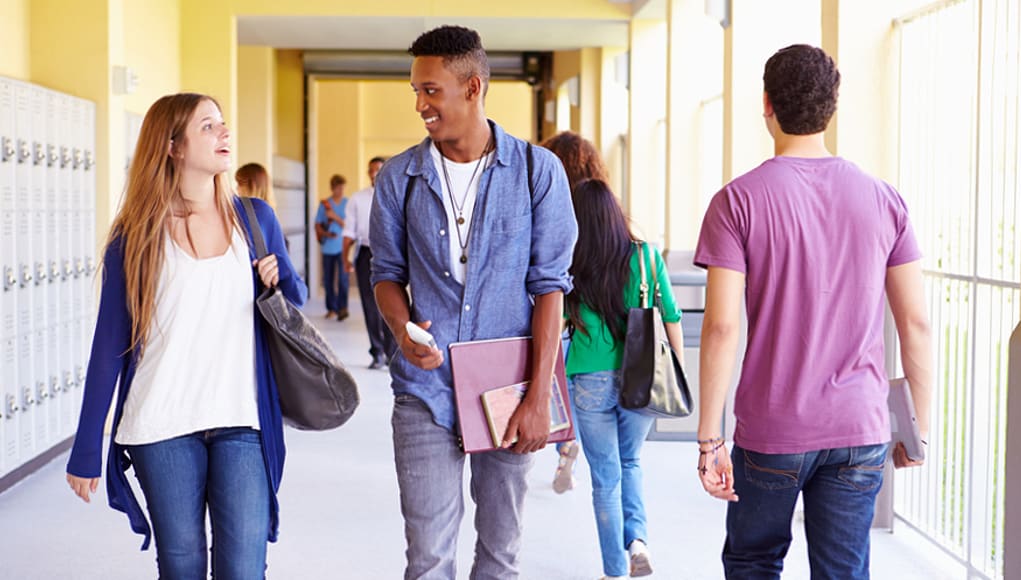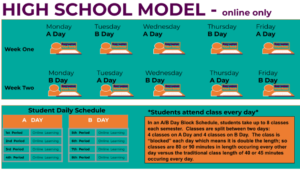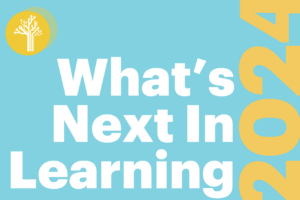Education Evolving is Making Strides

It only makes sense that there are deep connections between innovation, student-centered learning, teacher-powered schools and a commitment to advancing equity. These are the primary focus areas of the nonprofit, nonpartisan Education Evolving (EE). Focused on improving American public education, Education Evolving is a Minnesota-based group of thought leaders in education reform that convenes networks of innovators in education and conducts policy research, analysis and advocacy.
Founder Ted Kolderie (author of The Split Screen Strategy and nationally recognized ed policy leader) recently passed the baton to new Executive Director Lars Esdal and a great team of associates who work in partnership with the EE Fellows and Board of Directors (chaired by Curtis Johnson, co-author of Disrupting Class).
The team recently hosted a convening (in a local brewery, no less) to thank and engage and those involved with EE through the years and to advance a path forward. During this convening, EE released principles of student-centered learning, a statement on education equity and Lars’ new Barriers to Policy paper.
I am grateful to serve on the Board of Directors of Education Evolving as we seek to impact learning for all students.
-Mary Ryerse
This blog was written by the Education Evolving Team and originally ran on the Ed Evolving site on October 6, 2017
It’s a busy and exciting time at Education Evolving. The last year and a half have brought a number of changes: we’ve added new faces to our team and a new executive director as our founding generation steps back from the daily work, welcomed new board members, and formally became our own independent nonprofit organization.
With all these recent changes, we were intentional about making 2017 a year of reflection. This week we are proud to unveil the results of that work, including a new vision for student-centered learning, statement on educational equity, policy paper, visual brand, and logo.
Principles of Student-Centered Learning
While a driving belief in our organization has always been that learning should be redesigned and personalized to better meet the unique needs of each student—that is, that learning should be student-centered—we had not previously been explicit about our vision for what that new form of learning would look like.
Over the last several months, we have been working to formalize what we as an organization mean when we use the term “student-centered learning.” We reflected back on how we’ve described our goals for learning over the years, especially in our prior strategy documents and publications, and took those reflections with us into a new, three-part process:
- Organizational Review: We looked at other organizations that have indicated that they either support or practice student-centered learning, personalized learning, and similar concepts to see what they included in their descriptions.
- Academic Research Literature Review: We did a comprehensive literature review of the academic research on student-centered learning, and on specific principles and themes of student-centered learning that we uncovered.
- Stakeholder Listening Sessions: In September, we held our first stakeholder listening session with the Minnesota Youth Council. In 2018, we will host several more listening sessions with students, educators, and families.
From this process, we identified our seven principles of student-centered learning, which are illustrated in the infographic below and our new brochure.

We assert that when these principles are fully realized the result is learning that is not only equitable, but also designed to meet the unique needs of all students. With that said, we also want to recognize that our principles are not set in stone. Rather, they are malleable, and as new research emerges we engage with more stakeholders and visit more schools, they will likely continue to evolve.
And finally, we emphasize that this is a list of principles and not a specific school design or blueprint. As an example of the difference, students having more choice and agency is a principle, whereas “project-based learning” is one of many possible design characteristics that educators can use to bring that principle to life. By describing student-centered learning only in terms of principles, we defer to the expertise of educators, families, and students, and keep our concept open to new design characteristics that innovators have not yet created.
Statement on Educational Equity
While working to describe student-centered learning, we were at the same time working to more explicitly articulate our organization’s role in advancing educational equity, and how it relates to student-centered learning.
Through this process, Education Evolving decided to define educational equity as: each student having what they need to reach their full potential. We also contend that when fully implemented, student-centered learning is analogous to equitable learning, since student-centered learning is learning that is designed to meet the unique needs of each individual student.
As this connection became clear to us, we were explicit in applying the lens of equity in crafting the student-centered principles described above. We asked: what elements of a learning experience, if present, would have the greatest positive impact on meeting the individual needs of all students, and in particular groups that have been traditionally underserved?
You can read our full equity statement here.
Clearing Policy Barriers to Student-Centered Learning Paper

Over the past year our executive director, Lars Esdal, has had conversations and interviews with over 25 educators—including teachers, principals, district administrators, and superintendents—in Minnesota school districts and charter schools that are innovating with student-centered learning.
He asked them first: what, concretely, changes as you implement student-centered learning? And second: how does state policy interfere with making those changes? The paper that resulted from this work presents an analysis of answers educators gave to these questions, and then goes on to suggest 17 recommendations for Minnesota state policy to remove the barriers educators identified.
You can read the full paper here.
For more, see:
- 8 Things to Look for in A Student-Centered Learning Environment
- Silicon Schools Reflects on Five Years of Personalized Learning
- Three Schools on Three Paths to Personalized Learning Success
Stay in-the-know with all things EdTech and innovations in learning by signing up to receive the weekly Smart Update.






0 Comments
Leave a Comment
Your email address will not be published. All fields are required.